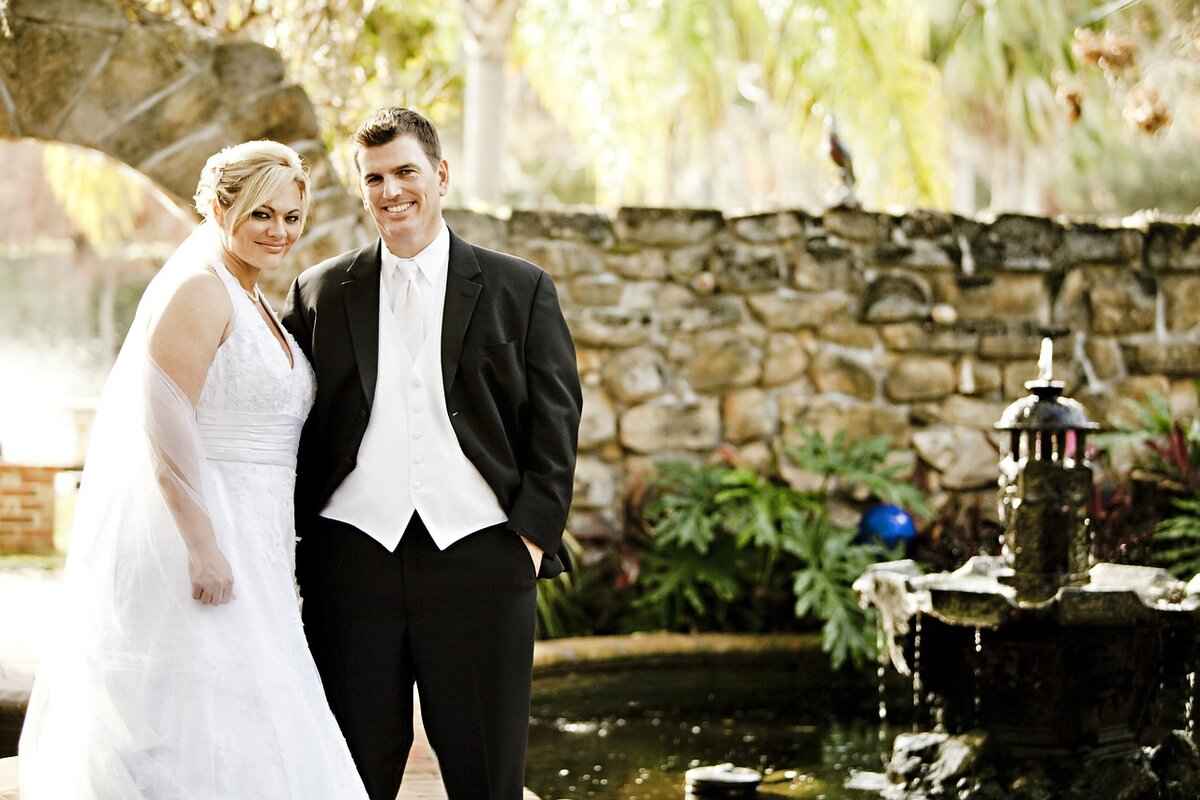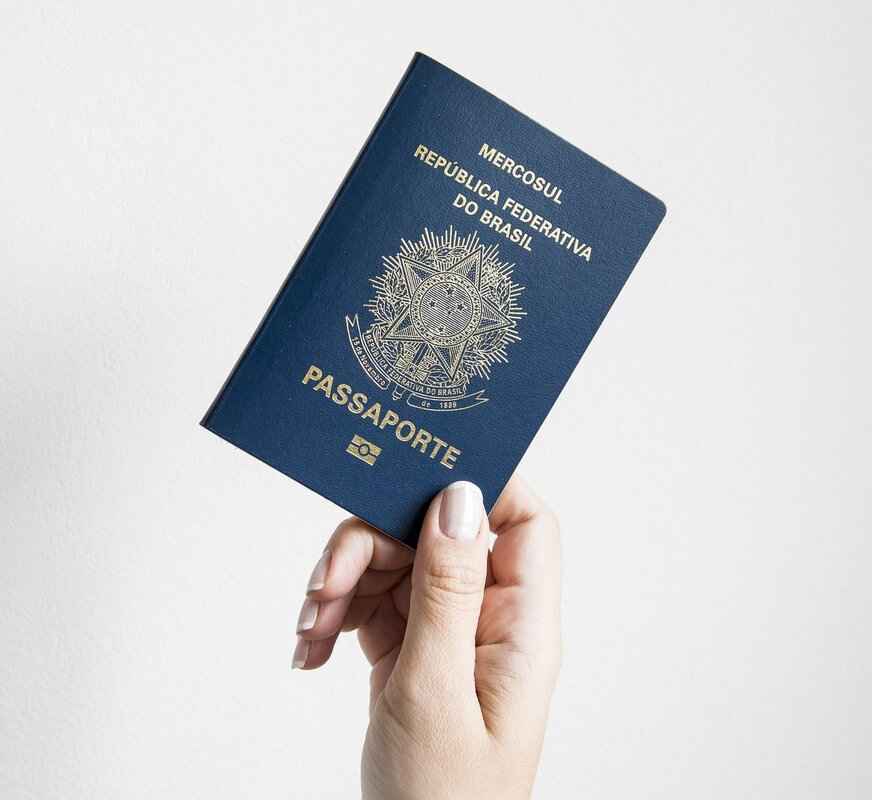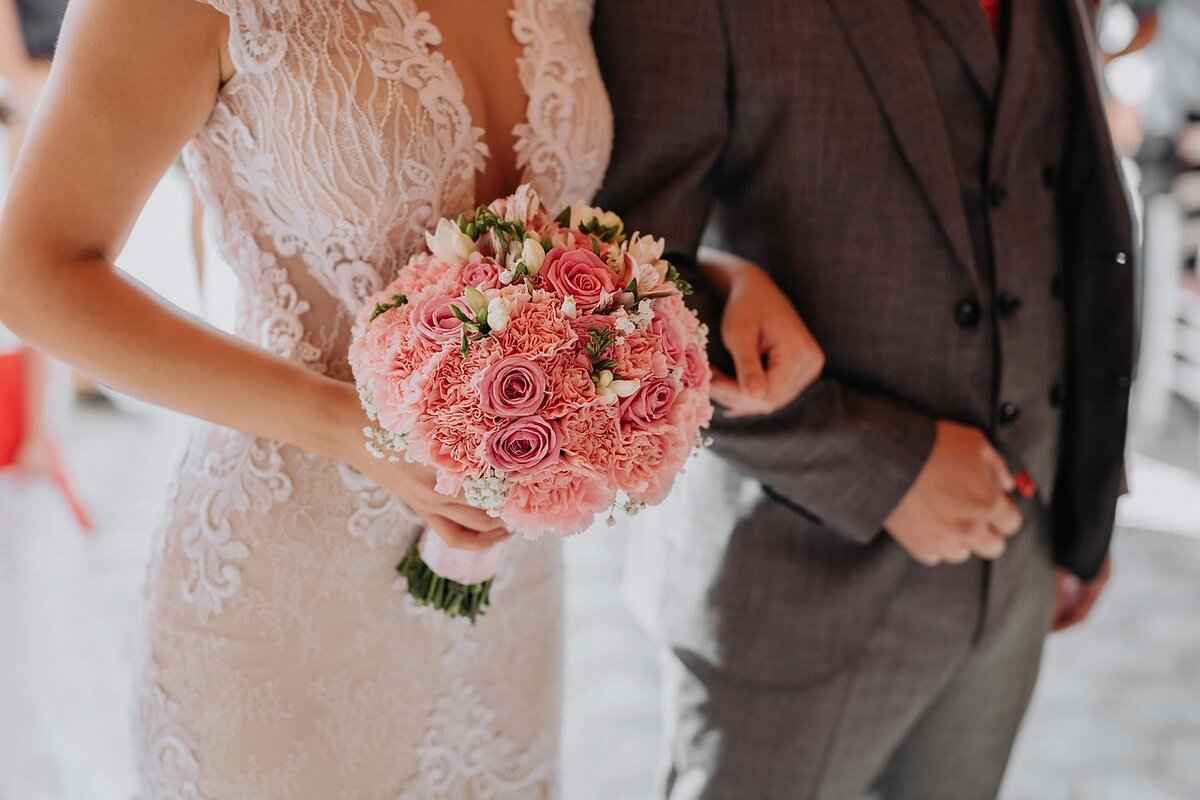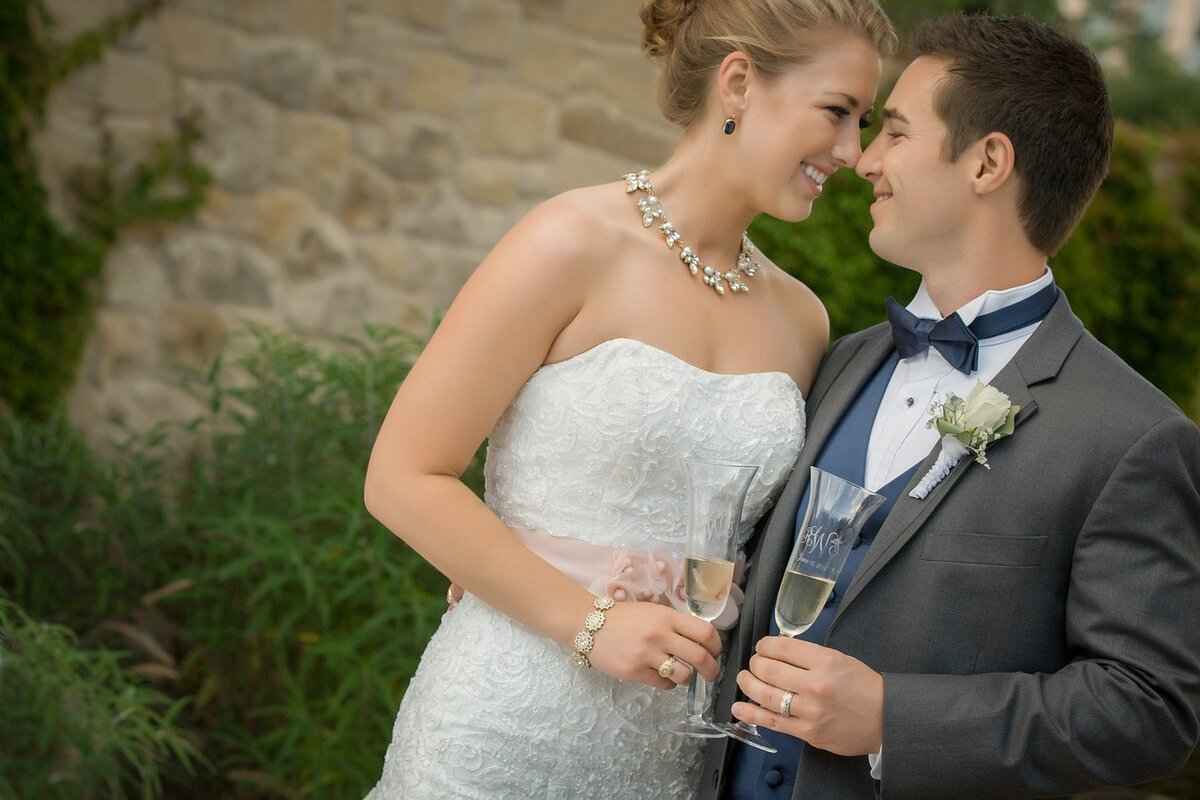This article serves as a comprehensive guide on the legal and procedural steps involved in marrying a foreign national in the United States. It aims to address common questions and concerns that couples may encounter throughout this process.
Understanding the Legal Requirements
Before you embark on the journey of marrying a foreign national, it is crucial to understand the legal requirements for marriage in the U.S. These requirements typically include:
- Age: Both parties must be of legal age, which varies by state.
- Consent: Both individuals must consent to the marriage.
- Documentation: Necessary documents include identification and proof of residency.
Choosing the Right State for Marriage
Marriage laws differ from state to state. Therefore, selecting the right location for your marriage is essential. Each state has its own regulations regarding:
- Marriage license requirements
- Waiting periods
- Fees associated with obtaining a marriage license
Marriage License Application Process
The application process for a marriage license generally involves submitting specific documents and information. Familiarizing yourself with this process can help streamline your wedding plans and avoid unnecessary delays.
Required Documents for Marriage License
Typically, you will need:
- Identification: Government-issued ID such as a passport or driver’s license.
- Proof of Residency: Documentation proving where you live.
- Additional Documents: Some states may require divorce decrees or death certificates if applicable.
Fees and Waiting Periods
Different states have varying fees and waiting periods for marriage licenses. Familiarizing yourself with these can help you plan your wedding timeline effectively.
Understanding Immigration Implications
Marrying a foreign national can have significant immigration implications. It is essential to understand the processes involved in obtaining a visa or adjusting status after marriage.
Visa Options for Foreign Spouses
There are several visa options available for foreign spouses:
- K-1 Fiancé Visa: This visa allows a foreign fiancé to enter the U.S. for marriage.
- CR-1 Spousal Visa: This is for foreign spouses of U.S. citizens, allowing them to reside in the U.S.
K-1 Fiancé Visa Process
The K-1 visa process involves several steps, including filing a petition and attending an interview. Understanding this process can help couples prepare for their wedding and subsequent residency.
CR-1 Spousal Visa Process
For those married to U.S. citizens, the CR-1 visa allows foreign spouses to apply for permanent residency. Knowing the application process and requirements is essential for a smooth transition.
Preparing for the Wedding Ceremony
Planning a wedding ceremony involves not just legalities but also personal preferences. Considerations include:
- Choosing a Venue and Officiant: Selecting the right venue and officiant is crucial for your wedding day.
- Incorporating Cultural Traditions: Many couples wish to blend their cultural traditions into the ceremony, creating a unique celebration.
Post-Marriage Steps for Foreign Spouses
After marriage, foreign spouses may need to take specific steps regarding residency and citizenship. Understanding these steps is vital for a smooth transition.
Adjusting Status After Marriage
Foreign spouses may need to adjust their immigration status post-marriage. This involves filing the necessary forms and gathering documentation to support their application.
Applying for U.S. Citizenship
Eventually, many foreign spouses may wish to apply for U.S. citizenship. This process involves meeting eligibility requirements and completing the application for naturalization.
By following these guidelines and understanding the complexities involved, couples can navigate the journey of marrying a foreign national in the United States with greater ease and confidence.

Understanding the Legal Requirements
When considering marriage to a foreign national in the United States, it is crucial to understand the legal requirements that govern such unions. The process can be intricate, but being informed will facilitate a smoother experience for both partners.
Firstly, one of the primary legal requirements is the minimum age for marriage. In most states, individuals must be at least 18 years old to marry without parental consent. However, some states allow individuals as young as 16 or 17 to marry with parental approval. It is essential to verify the specific age requirements in the state where the marriage will take place.
Another critical aspect is marital consent. Both parties must willingly agree to the marriage, and this consent must be given in the presence of an authorized officiant. In cases where one partner is a foreign national, understanding how their home country’s laws may impact consent is also important.
In addition to age and consent, couples must prepare various documents to obtain a marriage license. These typically include:
- Government-issued photo identification (such as a passport or driver’s license)
- Proof of residency (which may vary by state)
- Birth certificates (in some cases)
- Any divorce decrees or death certificates if previously married
It is advisable to check with the local county clerk’s office for the specific documentation required, as it can differ significantly from one state to another.
Furthermore, many states impose a waiting period between applying for the marriage license and the actual ceremony. This period can range from no waiting time to several days, depending on the state. It is wise to factor this into your wedding planning timeline.
Couples should also be aware of the fees associated with obtaining a marriage license. These fees can vary widely, often ranging from $20 to $100 or more, depending on the state and county. Additionally, some states may offer discounts for couples who complete premarital counseling.
Understanding these legal requirements is not just about compliance; it is also about ensuring that both partners feel respected and secure in their decision to marry. For foreign nationals, navigating the U.S. marriage system can be daunting, but being well-prepared with the necessary information can make the process much more manageable.
In summary, marrying a foreign national in the U.S. involves several legal considerations, including age, consent, and documentation for the marriage license. By familiarizing yourself with these requirements and planning ahead, you can avoid potential pitfalls and ensure a joyous wedding experience.

Choosing the Right State for Marriage
When considering marriage in the United States, one of the most crucial decisions is choosing the right state to tie the knot. Marriage laws can differ significantly from one state to another, impacting various aspects of the marriage process. Understanding these differences is vital for couples, especially when one partner is a foreign national.
Each state has its own set of requirements for obtaining a marriage license, which can include age restrictions, residency requirements, and necessary documentation. For example, some states may require couples to provide proof of identity, while others might ask for additional documents, such as divorce decrees if applicable.
In addition to requirements, waiting periods can also vary. Some states have no waiting period, allowing couples to obtain their marriage license and get married on the same day. On the other hand, states like Nevada require a waiting period of up to one day, while others may have longer delays. This aspect is particularly important for couples who are planning a wedding on a specific date.
| State | Waiting Period | Fees |
|---|---|---|
| California | No waiting period | $70 |
| Texas | 72 hours | $70 |
| Nevada | 1 day | $77 |
| Florida | 3 days | $93.50 |
Moreover, the fees associated with obtaining a marriage license can also differ widely. While some states charge a nominal fee, others may impose higher costs. It’s essential to budget for these expenses when planning your wedding, particularly if you are considering a destination wedding in a state other than your home state.
Another factor to consider is the legal recognition of your marriage in different states. While all states must recognize marriages legally performed in other states due to the Full Faith and Credit Clause of the U.S. Constitution, there may be nuances in how marriages are treated, particularly for same-sex couples or those involving foreign nationals. Therefore, couples should ensure that their marriage will be recognized in their state of residence.
To navigate these complexities, it is advisable for couples to consult with a legal expert or an attorney who specializes in family law. They can provide tailored advice based on individual circumstances, ensuring that all legal requirements are met and that the couple can enjoy a smooth wedding experience.
Ultimately, the choice of state for marriage can significantly influence the overall experience of tying the knot. By understanding the various requirements, waiting periods, and fees associated with marriage licenses in different states, couples can make informed decisions that align with their plans and preferences.
Marriage License Application Process
Obtaining a marriage license is a crucial step in the journey towards marriage, especially when one partner is a foreign national. The can vary significantly depending on the state where you plan to wed. Familiarizing yourself with the requirements can help ensure a smooth experience and prevent any unnecessary delays in your wedding plans.
The application process for a marriage license involves several essential steps. First, you will need to identify the specific requirements of the state where you intend to marry, as these can differ widely.
- Research State Requirements: Each state has its own laws regarding marriage licenses, including age restrictions, residency requirements, and necessary documentation.
- Gather Required Documents: Typically, you will need to present valid photo identification, such as a driver’s license or passport. Some states may also require proof of residency or a birth certificate.
- Complete the Application Form: Most states provide a marriage license application form that can often be completed online or in person at the local county clerk’s office.
After completing the application form, you may need to schedule an appointment or visit the clerk’s office in person. It’s important to check the office hours and whether you need to make an appointment ahead of time.
In addition to identification, you may be asked to provide:
- Proof of dissolution of previous marriages, if applicable.
- Parental consent if either party is under the legal age.
- Proof of citizenship or residency for foreign nationals, which may include a visa or green card.
Fees for obtaining a marriage license can vary by state and even by county. Typically, you can expect to pay between $20 to $100. Some states also have waiting periods, which can range from 24 hours to several days, before the license becomes valid. Understanding these factors is crucial for effective wedding planning.
Once you have submitted your application and paid the required fees, you will receive your marriage license. It is important to keep this document safe, as you will need it on your wedding day. The marriage license itself will have an expiration date, usually ranging from 30 to 90 days, depending on the state.
In summary, the marriage license application process is a key step in preparing for your wedding. By understanding the specific requirements, gathering necessary documents, and being aware of fees and waiting periods, you can navigate this process with ease. This preparation not only helps in avoiding delays but also allows you to focus on planning the joyous celebration of your marriage.
Required Documents for Marriage License
When planning to marry a foreign national in the United States, understanding the required documents for obtaining a marriage license is crucial. This process can vary significantly from state to state, but certain fundamental requirements are common across the country. Proper preparation can help avoid delays and ensure a smooth application process.
Generally, you will need to present valid identification. This typically includes a government-issued photo ID such as a driver’s license or passport. It is essential to ensure that your ID is not expired, as many states have strict rules regarding the validity of identification.
In addition to identification, you must provide proof of residency. This can include documents such as utility bills, bank statements, or lease agreements that clearly display your name and current address. Some states may have specific residency requirements, so it’s wise to check local regulations beforehand.
Moreover, you may need to gather additional documents depending on your circumstances. For example, if either party has been previously married, you will need to provide a divorce decree or a death certificate, as applicable. This documentation serves to prove that you are legally free to marry.
Some states also require a marriage license application form, which can often be obtained online or at the local clerk’s office. Filling this form out completely and accurately can save you time during your visit to apply for the license.
It is also advisable to check if your state mandates a waiting period before the marriage license can be issued. This period can range from a few hours to several days, depending on the jurisdiction. Familiarizing yourself with these requirements can help you plan your wedding timeline effectively.
Furthermore, be prepared to pay a license fee, which varies by state and can range from $20 to $100. Some locations may accept only cash, while others may allow credit or debit card payments. Knowing the fee structure in advance can help you avoid any last-minute surprises.
Lastly, consider the option of scheduling an appointment at your local clerk’s office if your state allows it. This can significantly reduce wait times and ensure that you have all necessary documents ready for submission. It is always best to call ahead and confirm what documentation is required and whether an appointment is necessary.
By gathering the required documents well in advance and understanding the specific requirements of your state, you can streamline the marriage license application process. This preparation helps ensure that your wedding plans proceed smoothly, allowing you to focus on the joyous occasion ahead.
Fees and Waiting Periods
When planning to marry a foreign national in the United States, understanding the fees and waiting periods associated with obtaining a marriage license is crucial. These factors can significantly impact your wedding timeline and overall planning process.
Each state in the U.S. has its own set of rules regarding marriage licenses, which includes variations in both costs and processing times. For example, some states may charge as little as $20 for a marriage license, while others may require fees upwards of $100. Additionally, certain states have a waiting period that can range from no waiting time at all to several days. This means that if you are planning a wedding on a specific date, knowing the fees and waiting periods in advance can help you avoid any last-minute complications.
To assist you in navigating this process, here’s a breakdown of common fees and waiting periods across various states:
| State | Marriage License Fee | Waiting Period |
|---|---|---|
| California | $70 | No waiting period |
| New York | $35 | 24 hours |
| Texas | $82 | 72 hours |
| Florida | $93.50 | 3 days (if not completing a pre-marital course) |
Understanding these variations is essential. For instance, if you plan to marry in a state with a waiting period, you should factor this into your overall wedding timeline. If your wedding is only a few days away, you may need to expedite your application or consider a different location.
Moreover, it’s important to note that some states may offer expedited services for an additional fee, allowing couples to receive their marriage license more quickly. This can be particularly beneficial for couples who are traveling from abroad and have limited time to finalize their wedding arrangements.
In addition to fees and waiting periods, be aware of any specific documentation that may be required when applying for a marriage license. This can include identification, proof of residency, and in some cases, divorce decrees if either party has been previously married. Preparing these documents in advance can help streamline the application process and reduce stress as your wedding date approaches.
In conclusion, familiarizing yourself with the fees and waiting periods for marriage licenses in your chosen state is a vital step in planning your wedding. By understanding these factors, you can create a more efficient timeline and ensure that your special day goes off without a hitch.
Understanding Immigration Implications
When considering the significant step of marrying a foreign national in the United States, it is crucial to understand the immigration implications that accompany this decision. The marriage process is not just a personal commitment; it also involves navigating complex legal and immigration systems that can affect both partners’ lives.
One of the first steps after marriage is determining the appropriate visa options available for foreign spouses. The two most common pathways are the K-1 fiancé visa and the CR-1 spousal visa. Each has its own set of requirements and processes that must be carefully followed to ensure compliance with U.S. immigration laws.
- K-1 Fiancé Visa: This visa is designed for foreign nationals who are engaged to U.S. citizens. It allows the fiancé to enter the U.S. for the purpose of marriage. Once in the country, the couple must marry within 90 days. After marriage, the foreign spouse can apply for a change of status to become a permanent resident.
- CR-1 Spousal Visa: This option is available for foreign nationals who are already married to U.S. citizens. The CR-1 visa allows the spouse to enter the U.S. as a permanent resident immediately upon arrival. This process typically takes longer than the K-1 visa route but can lead to a more straightforward path to permanent residency.
For those who enter the U.S. on a K-1 visa, adjusting status is a critical step. After marriage, the foreign spouse must file Form I-485, Application to Register Permanent Residence or Adjust Status. This process includes submitting various documents, such as proof of marriage, financial support, and medical examinations. It is essential to provide accurate and complete information to avoid delays or denials.
On the other hand, CR-1 visa holders typically do not need to adjust their status upon entering the U.S., as they already hold permanent resident status. However, they must still comply with all immigration regulations and maintain their residency status.
After a foreign spouse has been a permanent resident for a specified period, they may wish to apply for U.S. citizenship. The eligibility requirements include being a permanent resident for at least three years if married to a U.S. citizen, demonstrating good moral character, and passing an English and civics test. The application process involves submitting Form N-400, Application for Naturalization, and attending an interview with U.S. Citizenship and Immigration Services (USCIS).
Understanding these immigration implications is vital for couples who are planning to marry a foreign national. It is recommended to consult with an experienced immigration attorney to navigate these processes effectively, ensuring that all legal requirements are met and that both partners are well-informed of their rights and responsibilities.
In summary, marrying a foreign national introduces various immigration considerations that must be carefully managed. From selecting the right visa to adjusting status and applying for citizenship, couples should be proactive in understanding the legal landscape to facilitate a smooth transition into married life in the U.S.

Visa Options for Foreign Spouses
are critical to consider when planning a marriage with a foreign national in the United States. Understanding the various visa categories can significantly impact both the marriage and the residency process. This section will explore the most common visa options available, including the K-1 fiancé visa and the CR-1 spousal visa, as well as other alternatives.
The K-1 fiancé visa is designed for foreign nationals who are engaged to U.S. citizens. This visa allows the fiancé to enter the United States for a period of 90 days, during which the couple must marry. The K-1 visa process begins with the U.S. citizen filing a petition with the United States Citizenship and Immigration Services (USCIS). Once approved, the foreign fiancé can apply for the visa at a U.S. consulate in their home country.
Key steps in the K-1 visa process include:
- Filing Form I-129F (Petition for Alien Fiancé)
- Attending an interview at the U.S. consulate
- Undergoing a medical examination
- Providing necessary documentation, such as proof of the relationship and financial support
Once the couple marries within the 90-day period, the foreign spouse can apply for adjustment of status to become a permanent resident.
On the other hand, the CR-1 spousal visa is intended for foreign nationals who are already married to U.S. citizens. This visa grants immediate permanent residency upon entry into the United States. The CR-1 visa process also begins with the U.S. citizen filing a petition with USCIS, but it typically takes longer than the K-1 process due to additional steps involved.
The CR-1 visa process consists of the following steps:
- Filing Form I-130 (Petition for Alien Relative)
- Receiving approval from USCIS
- Completing the National Visa Center (NVC) processing
- Attending an interview at the U.S. consulate
- Undergoing a medical examination
It’s important to note that while the CR-1 visa provides immediate permanent residency, the couple must have been married for less than two years at the time of entry. If the marriage exceeds two years, the foreign spouse will receive a ten-year green card instead of a conditional one.
In addition to the K-1 and CR-1 visas, there are other options available for foreign spouses, such as the K-3 visa, which allows foreign spouses to enter the U.S. while waiting for their immigrant visas to be processed. However, this option is less common today due to processing delays and the streamlined nature of the CR-1 process.
Choosing the right visa is crucial for a successful marriage and residency. Couples should consider their specific circumstances, including the timeline for marriage, the length of their relationship, and their future plans in the U.S. Consulting with an immigration attorney can provide valuable insights and guidance tailored to individual situations.
In summary, understanding the available visa options is essential for foreign spouses navigating the complexities of U.S. immigration law. Whether opting for a K-1 fiancé visa or a CR-1 spousal visa, being informed about the requirements and processes can help ensure a smoother transition into married life and residency in the United States.
K-1 Fiancé Visa Process
The K-1 fiancé visa is a unique opportunity for foreign nationals engaged to U.S. citizens, allowing them to enter the United States for the purpose of marriage. This visa is specifically designed for couples who intend to marry within 90 days of the foreign fiancé’s arrival in the U.S. Understanding the application process and requirements is crucial for a successful transition into married life.
Eligibility Requirements for the K-1 Visa
To qualify for the K-1 visa, both the U.S. citizen and the foreign fiancé must meet specific eligibility criteria:
- The U.S. citizen must be a legal resident and able to provide proof of citizenship.
- Both parties must be legally free to marry, meaning any prior marriages must be legally dissolved.
- Couples must have met in person at least once within the two years preceding the application, with some exceptions for certain circumstances.
Application Process Overview
The K-1 visa application process involves several steps:
- Filing the Petition: The U.S. citizen must file Form I-129F, the Petition for Alien Fiancé, with U.S. Citizenship and Immigration Services (USCIS). This form serves to establish the legitimacy of the relationship.
- USCIS Processing: After the petition is approved, it is forwarded to the National Visa Center (NVC) for further processing.
- Visa Application: The foreign fiancé must then complete Form DS-160, the Online Nonimmigrant Visa Application, and pay the required visa application fee.
- Interview: The foreign fiancé will be scheduled for an interview at the U.S. embassy or consulate in their home country, where they will present necessary documentation, including proof of the relationship.
- Visa Approval: If approved, the K-1 visa will be issued, allowing the foreign fiancé to travel to the U.S.
Required Documentation
When applying for the K-1 visa, several documents must be submitted:
- Proof of U.S. citizenship of the petitioner (e.g., birth certificate, passport).
- Evidence of a genuine relationship, such as photos, correspondence, and travel records.
- Completed forms (I-129F and DS-160).
- Medical examination results from an approved physician.
- Police clearance certificates from the foreign fiancé’s country of residence.
Timeline and Costs
The processing time for a K-1 visa can vary significantly based on several factors, including the service center handling the petition and the volume of applications. Generally, it can take anywhere from 6 to 12 months from the initial petition to the visa issuance. The costs associated with the K-1 visa include:
- Filing fee for Form I-129F.
- Visa application fee for Form DS-160.
- Medical examination costs.
- Potential travel expenses for the foreign fiancé to attend the visa interview.
Post-Visa Steps
Once the K-1 visa is granted and the foreign fiancé arrives in the U.S., the couple must marry within 90 days. After marriage, the foreign spouse can apply for adjustment of status to become a lawful permanent resident. This process involves filing Form I-485, Application to Register Permanent Residence or Adjust Status, along with supporting documentation.
In summary, the K-1 fiancé visa process is a detailed journey that requires careful preparation and adherence to legal requirements. By understanding the steps involved, couples can ensure a smoother path toward their wedding and a shared future in the United States.
CR-1 Spousal Visa Process
The CR-1 spousal visa is specifically designed for foreign spouses of U.S. citizens, allowing them to live permanently in the United States. This visa is an essential pathway for couples who wish to build a life together in the U.S. Understanding the application process and the requirements is crucial for ensuring a smooth transition to long-term residency.
To qualify for the CR-1 visa, certain eligibility criteria must be met:
- Marriage Validity: The marriage must be legally recognized in the country where it took place.
- U.S. Citizenship: The sponsoring spouse must be a U.S. citizen.
- Intent to Live Together: Both spouses must demonstrate a genuine intention to live together in the U.S. after approval.
- Financial Support: The U.S. citizen must meet specific income requirements to support their spouse.
The application process for a CR-1 visa involves several steps:
- Filing the Petition: The U.S. citizen spouse must file Form I-130 (Petition for Alien Relative) with U.S. Citizenship and Immigration Services (USCIS).
- USCIS Processing: Once the petition is approved, it is forwarded to the National Visa Center (NVC) for further processing.
- Visa Application: The foreign spouse must complete Form DS-260 (Immigrant Visa Application) and submit the required documents.
- Consular Interview: An interview at the U.S. embassy or consulate in the foreign spouse’s country is required.
- Visa Issuance: If approved, the CR-1 visa will be issued, allowing the foreign spouse to enter the U.S. as a permanent resident.
Gathering the necessary documents is vital for a successful application. Typical requirements include:
- Marriage Certificate: A copy of the official marriage certificate.
- Proof of Citizenship: Documentation proving the U.S. spouse’s citizenship status.
- Financial Evidence: Tax returns, pay stubs, or employment verification to demonstrate the ability to support the foreign spouse.
- Identity Documents: Passports, birth certificates, and photos as specified in the application guidelines.
The processing time for a CR-1 visa can vary significantly based on several factors, including:
- USCIS Processing Times: Initial petition processing can take several months.
- NVC Processing: Once the petition is approved, the NVC may take additional time to process the application.
- Interview Scheduling: The wait time for an interview appointment can differ by country.
Couples may face challenges during the CR-1 visa process. Here are some tips to navigate these hurdles:
- Be Thorough: Ensure all forms are filled out completely and accurately.
- Stay Organized: Keep copies of all documents submitted and received throughout the process.
- Prepare for the Interview: Familiarize yourselves with common interview questions to reduce anxiety during the consular interview.
By understanding the requirements and following the outlined steps, couples can effectively navigate the and work towards building a life together in the United States.

Preparing for the Wedding Ceremony
is an exciting yet intricate process that blends legal considerations with personal choices. Whether you are planning a traditional ceremony or a modern celebration, understanding the various elements involved can help ensure a memorable day.
First and foremost, it is essential to select a venue that resonates with your vision. Consider factors such as the location, capacity, and ambiance. Popular options include outdoor gardens, elegant ballrooms, and intimate chapels. Ensure the venue aligns with your wedding theme and can accommodate your guest list comfortably.
When it comes to choosing an officiant, this person will play a pivotal role in your ceremony. Depending on your beliefs and preferences, you can opt for a religious leader, a civil officiant, or even a close friend or family member who is ordained. Discuss your ceremony’s tone and any specific rituals you wish to include to ensure the officiant can tailor the service accordingly.
- Legal Requirements: Ensure that your officiant is authorized to conduct marriages in your chosen state. Familiarize yourself with any necessary paperwork that may need to be completed before the ceremony.
- Personal Touch: Share your love story with the officiant to help them personalize the ceremony, making it more meaningful for you and your guests.
Incorporating cultural traditions can add depth and significance to your ceremony. Many couples desire to blend their unique backgrounds, creating a rich tapestry of customs. Consider the following:
- Rituals: Discuss which traditions are important to you and your partner. This could include unity ceremonies, traditional readings, or specific music.
- Attire: You might choose to wear traditional garments from either culture, which can symbolize the merging of families.
Another vital aspect is the wedding timeline. Create a detailed schedule that outlines the order of events, including the ceremony, reception, and any other activities. This will help keep everything organized and ensure that you stay on track throughout the day.
Don’t forget about your guests! Providing them with clear information regarding accommodations, travel arrangements, and the itinerary can enhance their experience. Consider creating a wedding website where they can find all the necessary details.
Lastly, remember to take a moment for yourselves amidst the planning chaos. Schedule some time to relax and enjoy each other’s company. After all, the wedding is a celebration of your love, and cherishing those moments will make the day even more special.
Choosing a Venue and Officiant
Choosing the right venue and officiant is one of the most significant decisions you will make when planning your wedding. This choice not only influences the atmosphere of your ceremony but also reflects your personal style and values. Here are some important considerations to help you make this crucial decision.
Understanding Your Preferences
- Style: Consider whether you envision a traditional, modern, or themed wedding. Your venue should align with this vision.
- Capacity: Ensure the venue can comfortably accommodate your guest list. An overcrowded space can detract from the experience.
- Location: Think about accessibility for your guests. A centrally located venue can make it easier for everyone to attend.
Legal Requirements for Officiants
In the U.S., officiants must meet specific legal criteria to perform marriages. This can vary by state, so it’s essential to:
- Verify Credentials: Ensure your officiant is legally recognized to conduct weddings in your chosen state.
- Check Availability: Popular officiants can book up quickly, so it’s wise to secure your choice as early as possible.
Types of Officiants
- Religious Officiants: If you want a religious ceremony, consider a priest, minister, or rabbi who aligns with your beliefs.
- Civil Officiants: For a non-religious ceremony, a judge or a licensed officiant can provide a more secular approach.
- Friends or Family: Some couples choose to have a friend or family member become ordained to officiate their wedding, adding a personal touch.
Venue Options
When selecting a venue, you have various options to consider:
- Outdoor Venues: Parks, gardens, or beaches can offer a beautiful backdrop, but have contingency plans for weather.
- Indoor Venues: Consider banquet halls, hotels, or historical buildings. These often provide amenities that can simplify your planning.
- Destination Weddings: If you’re considering a wedding away from home, research locations that are accessible and appealing to your guests.
Budget Considerations
Keep your budget in mind when selecting a venue and officiant. Costs can vary significantly based on location, time of year, and services included. Here are some tips:
- Research: Compare different venues and officiants to find options that fit your budget without compromising your vision.
- Ask About Packages: Many venues offer packages that include catering, decoration, and other services which can save you money.
Final Thoughts
Choosing the right venue and officiant is more than just a logistical decision; it’s about creating the perfect atmosphere for your special day. Take your time to explore different options, consult with professionals, and consider your personal preferences to ensure your wedding reflects your unique love story.
Incorporating Cultural Traditions
Incorporating cultural traditions into a wedding ceremony is a meaningful way for couples to celebrate their backgrounds and create a unique experience. Many couples find themselves navigating the delicate balance of honoring their individual heritages while also creating a unified ceremony that reflects their shared love and commitment. This section explores various ways to blend cultural traditions effectively, ensuring that both partners feel represented and respected.
Understanding Each Partner’s Culture
Before the wedding planning begins, it is essential for couples to have open discussions about their cultural backgrounds. This can include traditions related to ceremonies, attire, food, and rituals. By understanding the significance of each tradition, couples can make informed decisions about what to incorporate into their wedding. For example, one partner may have a specific ritual that symbolizes unity, while the other may have a traditional dance that celebrates family.
Creating a Fusion Ceremony
A fusion ceremony is an excellent way to blend cultural elements seamlessly. Couples can choose to integrate various rituals from both cultures into the ceremony. For instance, they might include:
- Rituals: Combine rituals such as a sand ceremony, which symbolizes the blending of lives, with traditional vows from each culture.
- Music: Incorporate music from both backgrounds, perhaps starting with one partner’s cultural songs and transitioning to the other’s.
- Readings: Select readings or poems that resonate with both cultures, sharing messages of love and commitment.
Attire that Reflects Heritage
Attire is another significant aspect where cultural traditions can be beautifully blended. Couples can choose to wear traditional garments from each culture or incorporate elements from both into their wedding attire. For example, the bride might wear a traditional dress while the groom opts for a suit that includes cultural accessories, such as a specific tie or sash. This approach not only honors their heritages but also creates a visually stunning representation of their union.
Food and Catering Choices
Food plays a central role in many cultures, and the wedding reception is an opportunity to showcase a diverse menu. Couples can work with caterers to create a menu that features dishes from both cultures. Consider offering a buffet-style meal that allows guests to sample various cuisines, or a plated dinner that includes courses from each background. This not only satisfies different palates but also enriches the overall experience for guests.
Involving Family and Friends
Involving family members in the planning process can help ensure that both cultures are represented authentically. Families can share their insights and preferences, which can lead to meaningful traditions being included in the ceremony. Additionally, having family members participate in specific roles during the ceremony, such as readings or blessings, can further honor cultural ties.
Respecting Differences
While blending traditions, it is crucial to respect differences and be open to compromise. Some traditions may hold more significance for one partner than the other. In such cases, it is essential to communicate openly and find a middle ground that honors both perspectives. This collaborative approach not only strengthens the relationship but also sets a positive tone for the marriage.
Ultimately, incorporating cultural traditions into a wedding is about celebrating love and unity. By thoughtfully blending elements from both backgrounds, couples can create a ceremony that is not only unique but also deeply meaningful. This shared experience will serve as a foundation for their life together, reflecting the beauty of their diverse heritages.

Post-Marriage Steps for Foreign Spouses
After marriage, foreign spouses face a series of important steps regarding their residency and citizenship in the United States. Understanding these steps is vital for a smooth transition into married life and ensuring compliance with immigration laws.
One of the first actions that newly married foreign spouses should consider is adjusting their immigration status. This process is crucial for those who entered the U.S. on a temporary visa or without a visa. Adjustment of Status (AOS) allows foreign spouses to apply for permanent residency (a green card) without having to leave the U.S. This process typically involves filing Form I-485, the application to register permanent residence or adjust status.
- Eligibility: To be eligible for AOS, the foreign spouse must be legally married to a U.S. citizen or a lawful permanent resident.
- Documentation: Essential documents include the marriage certificate, proof of the U.S. spouse’s citizenship or residency, and evidence of a bona fide marriage.
- Interview: Most applicants will be required to attend an interview with U.S. Citizenship and Immigration Services (USCIS) to verify the authenticity of the marriage.
In addition to adjusting status, many foreign spouses may wish to pursue U.S. citizenship after a period of permanent residency. The pathway to citizenship involves several steps:
- Eligibility for Naturalization: Generally, foreign spouses of U.S. citizens can apply for citizenship after three years of permanent residency, provided they meet certain conditions.
- Application Process: This involves filing Form N-400, the application for naturalization, along with the required fees and documentation.
- Citizenship Test: Applicants must pass a civics and English test to demonstrate their knowledge of U.S. history and government.
It is also important for foreign spouses to understand the implications of their immigration status on their ability to work and travel. After obtaining a green card, they will have the right to work in the U.S. without restrictions. However, traveling outside the U.S. during the adjustment process can be risky and may require applying for advance parole to re-enter the country legally.
Furthermore, foreign spouses should keep abreast of any changes in immigration laws that may affect their residency status. Consulting with an immigration attorney can provide personalized guidance and help navigate complex legal requirements.
In summary, the post-marriage steps for foreign spouses include adjusting their immigration status and considering the path to U.S. citizenship. By understanding these processes and seeking appropriate legal advice, foreign spouses can ensure a successful transition into their new lives in the United States.
Adjusting Status After Marriage
When a foreign national marries a U.S. citizen or lawful permanent resident, it is crucial to understand the process of adjusting their immigration status post-marriage. This adjustment is essential for the foreign spouse to obtain legal residency in the United States. Below, we outline the necessary steps and documentation required for this process, ensuring a smooth transition for the couple.
The Adjustment of Status (AOS) is a process that allows an eligible individual to become a lawful permanent resident of the U.S. without having to leave the country. For foreign spouses, this typically occurs after marriage to a U.S. citizen or a lawful permanent resident.
- The foreign spouse must be legally married to a U.S. citizen or lawful permanent resident.
- The marriage must be bona fide, meaning it is genuine and not entered into solely for immigration purposes.
- The foreign spouse must be physically present in the U.S. at the time of application.
To initiate the adjustment process, the foreign spouse will need to gather and submit several key documents:
| Document | Description |
|---|---|
| Form I-485 | Application to Register Permanent Residence or Adjust Status. |
| Form I-130 | Petition for Alien Relative filed by the U.S. citizen or lawful permanent resident spouse. |
| Proof of Marriage | Marriage certificate and any other evidence supporting the legitimacy of the marriage. |
| Medical Examination | Form I-693, signed by a USCIS-approved physician. |
| Proof of Financial Support | Form I-864, Affidavit of Support, demonstrating the U.S. spouse can financially support the foreign spouse. |
The application process can be complex, but understanding the steps can help ease the burden:
- Complete and submit the necessary forms, including Form I-485 and Form I-130.
- Pay the required filing fees, which can vary based on the forms submitted.
- Attend a biometrics appointment where fingerprints and photographs will be taken.
- Participate in an interview with USCIS, where both spouses will be asked questions to confirm the legitimacy of the marriage.
The timeline for AOS can vary significantly based on several factors, including:
- The service center processing the application.
- The completeness of the application and supporting documents.
- The current workload of USCIS.
Generally, the process can take anywhere from several months to over a year.
While many couples successfully navigate the adjustment process, some challenges may arise:
- Requests for additional evidence (RFE) from USCIS.
- Delays due to background checks or other security measures.
- Denial of the application if the marriage is deemed fraudulent.
It is advisable to consult with an immigration attorney to address any concerns and ensure all documentation is correctly prepared.
In summary, adjusting immigration status after marriage is a critical step for foreign spouses wishing to reside legally in the U.S. By following the outlined steps and ensuring all required documentation is in order, couples can facilitate a smoother transition into married life in the United States.
Applying for U.S. Citizenship
Applying for U.S. citizenship is a significant milestone for many foreign spouses who wish to solidify their ties to the United States. This process, known as naturalization, provides a pathway for lawful permanent residents to become full-fledged citizens, enjoying the rights and responsibilities that come with citizenship. Below, we delve into the eligibility requirements and the application process for naturalization in the U.S.
To be eligible for U.S. citizenship, applicants must meet several criteria. These include:
- Age: Applicants must be at least 18 years old at the time of application.
- Residency: Generally, applicants must have been lawful permanent residents (green card holders) for at least five years, or three years if married to a U.S. citizen.
- Continuous Residence: Applicants must demonstrate continuous residence in the U.S. during the required period and must not have taken any trips abroad lasting six months or more without proper documentation.
- Good Moral Character: Applicants must show good moral character for the five or three years preceding their application, which includes adherence to U.S. laws and ethical standards.
- English Language Proficiency: Applicants must be able to read, write, and speak basic English, with some exceptions for older applicants or those with disabilities.
- Knowledge of U.S. History and Government: Applicants must pass a civics test covering U.S. history and government fundamentals.
The process of applying for U.S. citizenship involves several steps:
- Complete Form N-400: The first step is to fill out the Application for Naturalization (Form N-400). This form requires personal information, residency details, and information about your background.
- Gather Required Documents: Applicants must submit supporting documents, which may include a copy of their green card, photographs, and evidence of marriage to a U.S. citizen, if applicable.
- Submit Your Application: Once the form and documents are complete, submit them to the U.S. Citizenship and Immigration Services (USCIS) along with the required fee.
- Attend Biometrics Appointment: After submission, applicants will receive a notice for a biometrics appointment where fingerprints are taken for a background check.
- Interview: Applicants must attend an interview with a USCIS officer, where they will answer questions about their application and take the civics and English tests.
- Receive a Decision: USCIS will notify applicants of their decision. If approved, they will be scheduled for an oath ceremony.
- Oath Ceremony: The final step is to attend an oath ceremony, where applicants take the Oath of Allegiance, officially becoming U.S. citizens.
It’s crucial for applicants to prepare thoroughly for each step of the process. Engaging with a qualified immigration attorney can provide personalized guidance and help navigate any complexities. Additionally, applicants should be aware of potential delays in processing times, which can vary based on the applicant’s location and the current workload of USCIS.
In summary, the journey to U.S. citizenship is a structured process that requires careful preparation and adherence to legal requirements. By understanding the eligibility criteria and the steps involved, foreign spouses can take proactive measures towards achieving their goal of becoming U.S. citizens.
Frequently Asked Questions
- What documents do I need to get married to a foreign national in the U.S.?
You’ll typically need valid identification, proof of residency, and possibly additional documents like divorce decrees or death certificates if applicable. It’s essential to check the specific requirements of the state where you plan to marry.
- Are there any waiting periods for obtaining a marriage license?
Yes, different states have varying waiting periods. Some states issue marriage licenses immediately, while others may require a waiting period of a few days. Be sure to check your state’s regulations to plan accordingly.
- What is the K-1 fiancé visa process?
The K-1 visa allows a foreign fiancé to enter the U.S. for marriage. After applying, you must prove your relationship and meet specific requirements. Once the visa is granted, you must marry within 90 days of arrival.
- How can foreign spouses adjust their immigration status after marriage?
After marriage, foreign spouses can apply for adjustment of status to become permanent residents. This process involves submitting specific forms and documents, including proof of marriage and financial support.
- Can a foreign spouse apply for U.S. citizenship?
Yes! After being a permanent resident for a certain period, foreign spouses can apply for U.S. citizenship. It’s important to meet eligibility requirements, including residency duration and good moral character.














